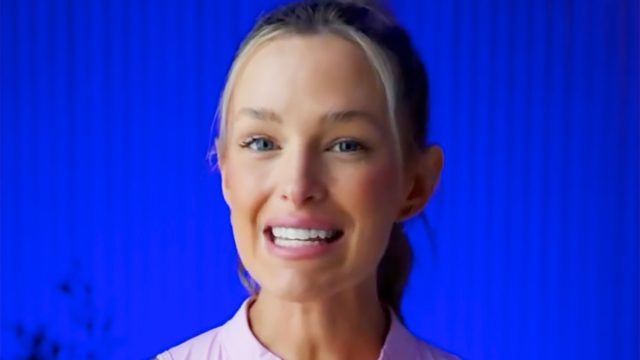5 Strength Training Mistakes That Sabotage Your Weight Loss

Are you lifting weights, but can't seem to make any progress? You might be making a common mistake without even knowing it. Dr. Shannon Ritchey, PT, DPT, is a physical therapist and personal trainer who helps people build muscle via "Gentle Consistency," she explains in her Instagram bio. In a new social media she pops the lid open on the biggest misconceptions about strength training. "Let's clear up some weightlifting myths," she writes. "I get overwhelmed by the abundance of misinformation I see about weightlifting." Here is what she has to say, and also what science has to say, about lifting weights for weight loss.
Here Are Some Common Myths
According to Dr. Ritchey, these are the most common strength training myths:
- You HAVE to lift super heavy.
- You can build muscle with light weights only.
- Time under tension is all that matters.
- I'm holding weights, so I'm building muscle and strength.
- It burns, and it's hard, so it's effective.
Here's What Research Says
"Here's what we know from research," she continues, revealing the following:
- To build muscle, take each set close to failure in under 30 reps.
- Work each muscle group individually so you know it's getting the proper stimulus.
- Program your week so each muscle group gets at least 48 hours of recovery.
What Doesn't Work? Training Upper and Lower Body in the Same Exercise
"Here's what doesn't appear to work (for the majority of the population)," she continues. The first thing? Working upper and lower body in the same exercise. "If we look at the stimulus to each muscle group, one muscle group may be getting "cheated" while the other group MAY be getting enough stimulus. I don't know of an exercise in which you can work multiple muscle groups and get close to failure in all of them at the same time," she says.
Using the Same Weight for Each Lift
The next thing that doesn't work? "Using the same 6, 8, or 10lb weights for each lift," she writes. "An 8lb weight may be great for some lifts but not enough for others. Different movements require different loads."
Burning Muscles Mean You Are Building Muscle or Burning Fat
Number three? "The burn = building muscle or burning fat," she writes. "The burn is more of a side-effect rather than a stimulus for muscle growth in itself. If you aren't approaching failure (a decrease in rep speed), you won't see much growth, even if it burns."
Working the Same Muscle Groups Each Day
One more thing that doesn't work? "Working the same muscle groups each day," she says. "It's counter-intuitive, but muscles grow in the recovery. So in order to see results and not suffer overuse injuries, spread out your work. We work each muscle ~2x/week on non-consecutive days. "
Bottom Line: Follow the Science
"Remember that what you see on social media is never the whole picture. Some people don't apply these things, yet they still have visible muscle definition. This could be due to genetics and/or their body fat percentage. But for the majority of us, we will see the best results from following the science. Instead of using bodies as marketing tactics, let's follow the science," she says. And if you enjoyed this article, don't miss 12-3-30 Walking Method: 20 Proven Tips to Lose Weight Faster.




